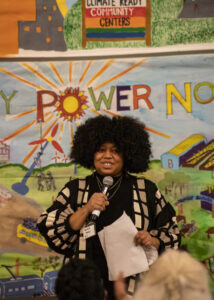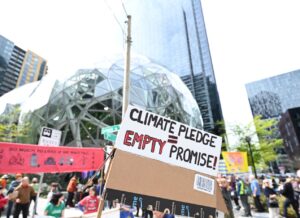Did you know that Oregon’s biggest source of emissions—and Washington’s third biggest— is … logging?
Don’t be embarrassed if that surprises you. We didn’t know, either. Like the fossil fuel industry—and for the same reasons—the timber industry has done an excellent job of hiding the truth. Most of all, they say that building with wood (and even burning it!) is carbon-neutral: trees grow back, after all!
What they decidedly do not say is that most of the carbon sequestration happens when the trees are already decades old. What they also do not say is that only about 15% of the carbon in a tree is sequestered in the building products made with the tree’s lumber. What they utterly fail to say is that most of the carbon in the forest is on the forest floor, in the soil and the duff, where it accumulates incredibly slowly, and that clear-cutting releases massive amounts of that carbon, almost immediately. It can take hundreds of years for soil to reabsorb the carbon emitted in days.
And finally, they sure as heck don’t say that Pacific Northwest forests, left intact, are the most carbon-sequestering forests in the world.
In other words, it’s not just the salmon and the spotted owl and all the other forest creatures whose lives depend on our amazing forests: ours do, too.
We have two more interviews coming soon—one with Council Member Teresa Mosqueda, and one with Paul Chiyokten Wagner, talking about his time at the Fairy Creek Blockade—but meanwhile, we wanted to encourage you to start thinking about our forests. And if, like us, you’re a relative newcomer to the PNW, or are too young to remember much about the Timber Wars, we think this Oregon Public Broadcasting series is an excellent start to understanding the history of forests and logging in our region, as well as a really well-told story. Listen, and enjoy!
And look out for more thoughts on forests soon …










